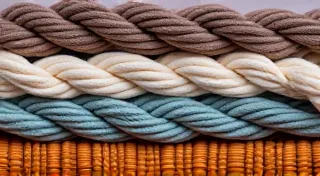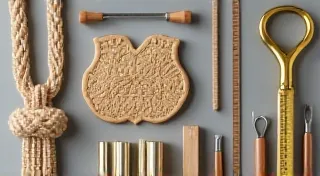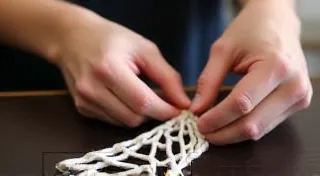Macrame Color Combinations: Creating Stunning Designs
Beyond the basic knots and techniques, mastering color combinations is what truly elevates your macrame projects from simple to stunning. While the beauty of natural cotton cords is undeniable, introducing color can transform a basic plant hanger into a vibrant work of art, or turn a wall hanging into a focal point of your decor. This macrame tutorial explores how to effectively combine colors to create visually appealing designs, even for beginners.
Understanding Color Theory Basics
You don't need to be an art expert to use color successfully in your macrame. Here are a few fundamental concepts:
- Warm Colors: Reds, oranges, and yellows evoke feelings of energy and warmth.
- Cool Colors: Blues, greens, and purples create a sense of calmness and serenity.
- Neutral Colors: Whites, creams, grays, and browns provide a grounding base and allow other colors to pop.
- Complementary Colors: These are colors opposite each other on the color wheel (e.g., red and green, blue and orange). Using them together creates a striking contrast.
- Analogous Colors: These are colors that are next to each other on the color wheel (e.g., blue, blue-green, green). They create a harmonious and cohesive look.
Beginner-Friendly Color Combinations
Let’s break down some easy-to-implement color schemes perfect for beginner macrame artists. Thinking beyond the color itself is key; consider the texture of your cords too. Rougher cords absorb more light and will subtly alter how your color palette appears.
1. Monochromatic Magic
This is the simplest starting point: using different shades and tones of a single color. For example, using light cream, beige, and tan cotton cords creates a sophisticated and calming project. This simplicity makes it a perfect introduction to understanding how subtle variations impact the overall feel of your piece.
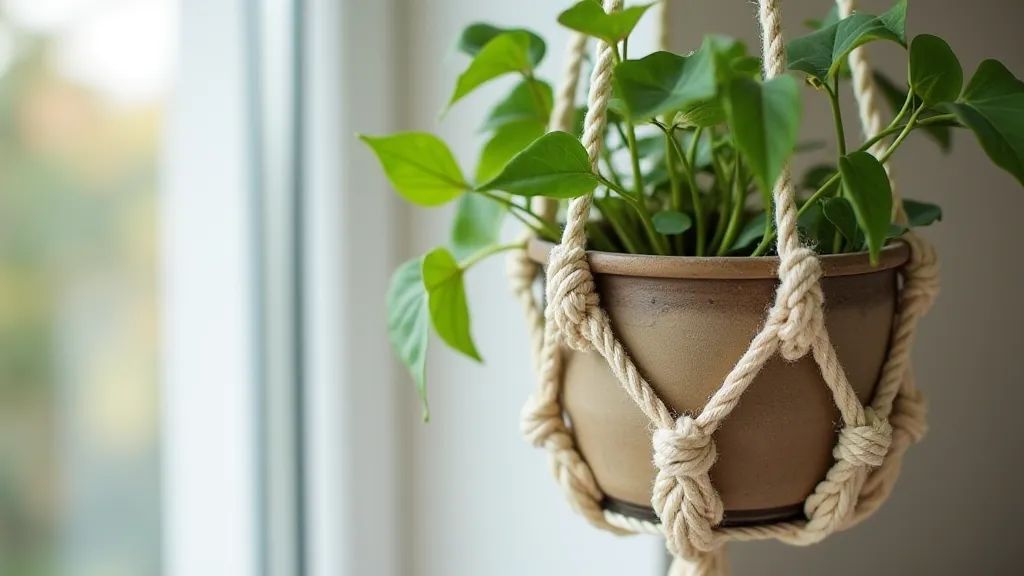
2. Neutral Base with a Pop of Color
A classic approach is to use a neutral base (white, cream, gray) and introduce a single bright color as an accent. A white macrame wall hanging with a few strands of turquoise or a natural linen cord with a bright coral accent can be incredibly eye-catching. Consider using the accent color sparingly for specific knots or sections of your project. Don't underestimate the power of texture here; adding a bit of fringe or incorporating a more textured cord can further enhance the visual impact.
3. Analogous Harmony
Choose two or three colors that sit next to each other on the color wheel. For example, combining blues and greens creates a calming, nature-inspired feel. Try using a lighter shade of one color as the primary cord and incorporating the others as accents. If you're looking for more creative inspiration in your projects, exploring macrame home decor ideas can spark your imagination.
4. Complementary Contrast
Using complementary colors can be more challenging but is rewarding when done right. Use one color as the dominant hue and the other as a smaller accent. For example, a blue macrame wall hanging with a touch of orange detailing will create a visually dynamic piece. This approach demands a keen eye for balance, but the payoff is a truly stunning, high-impact piece. Mastering a specific knot like the Double Half Hitch can also help to bring out the best of your contrasting colors; learn the Double Half Hitch knot for added texture and depth.
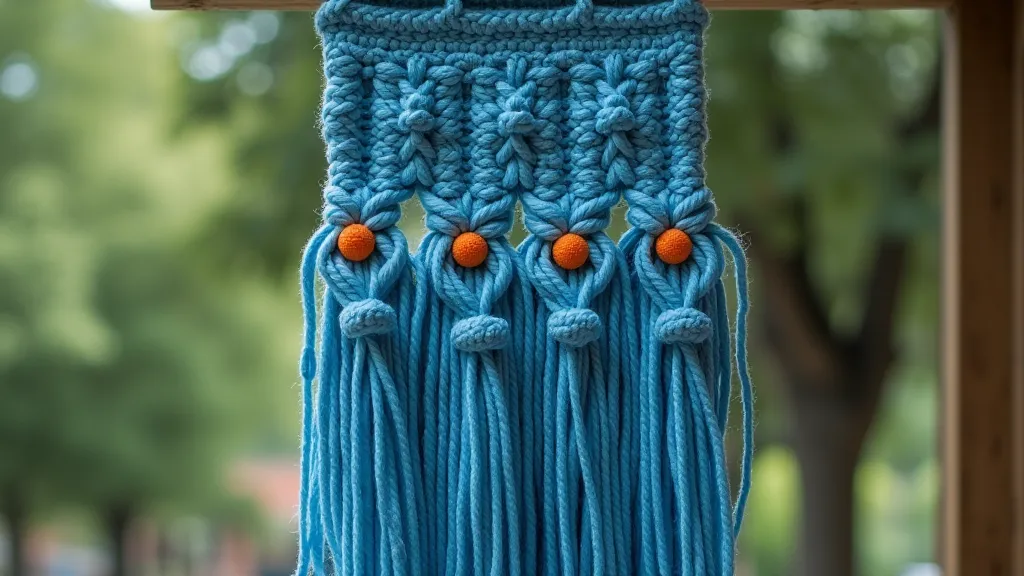
Tips for Success
- Start Small: Don't feel pressured to create complex color schemes right away. Experiment with two or three colors.
- Consider Your Project: The purpose of your macrame piece influences color choices. A plant hanger for a bright room might benefit from cooler tones, while a piece for a cozy nook could be warmer.
- Swatch Test: Before committing to an entire project, tie together small samples of your chosen cords to see how they look together in person. Colors can appear differently on screen.
- Texture Matters: The texture of your cords will also affect how colors appear. Rougher cords will absorb more light and can make colors seem darker.
- Inspiration is Everywhere: Look to nature, fashion, and art for color inspiration. The beauty of macrame isn’t just about the visual; it’s about connecting with tradition – find resonance with the Echoes of the Weaver: Finding Ancestral Rhythms in Hand Knotting.
Beyond the Basics
As you gain confidence, you can experiment with more complex combinations, such as using triads (three colors evenly spaced on the color wheel) or introducing metallic cords for added shimmer. Exploring imperfections and finding grace within your work is a part of the process; embrace the Fractured Symmetry: Finding Grace in Macrame’s Imperfections. Consider adding fringe or tassels for added dimension and movement.
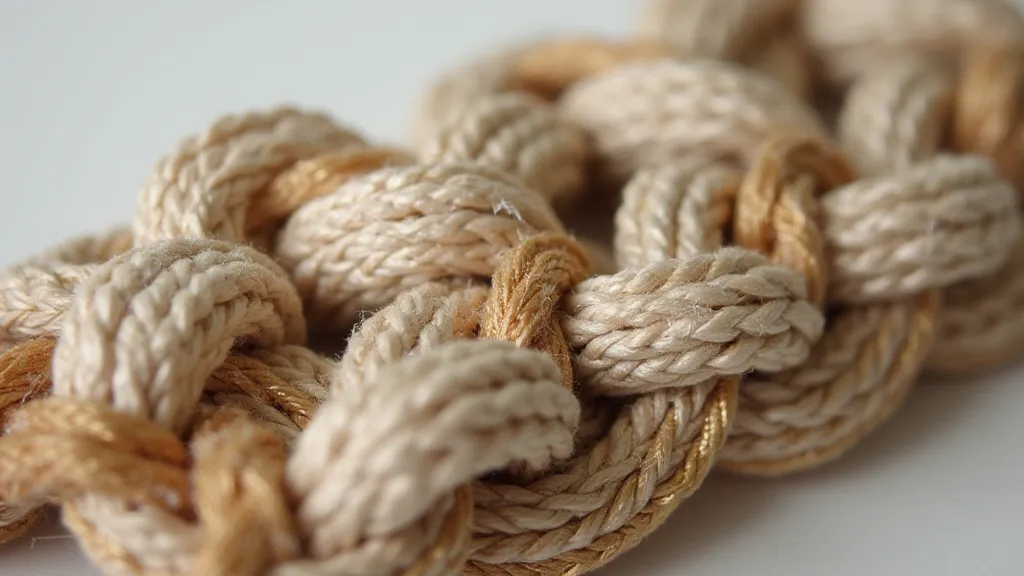
The versatility of macrame extends far beyond simple plant hangers and wall decor; explore a wide range of possibilities to truly unleash your creativity. From intricate bracelets to elaborate tapestries, the potential is boundless. Don’t be afraid to push boundaries and experiment with unconventional materials and techniques. Remember to always consider the overall feel you want to create, and let your intuition guide you.
With a little experimentation and an understanding of basic color theory, you can create macrame projects that are not only functional but also stunning works of art. Happy knotting!

